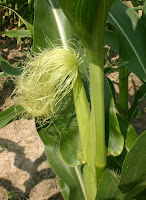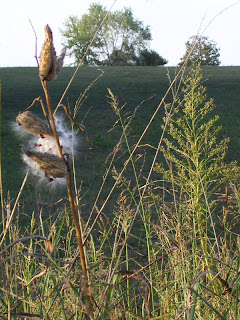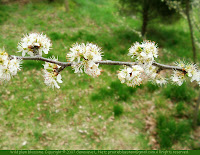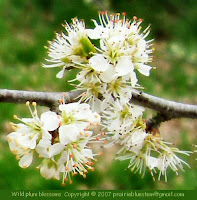May in Christian County, KY
  |
I saw this beautiful, full rainbow on Mother's Day about
6:30 pm. On the left side, a double rainbow is slightly visible.

The farm buildings here (and those in the rainbow photo)
are Mennonite-built. Their distinctive, consistent
building style is easy to recognize, once you know it.
This crow was perched on one of the big lights in the
mall parking lot in Hopkinsville. If this photo had
sound effects, you'd quickly turn down the volume.
He was very noisy! When he saw me paying
attention to him, he flew over to the highest point
attention to him, he flew over to the highest point
of the mall's roofline and sat there -- still cawing!
Sweet peas in a cemetery fence row, and
overhead, branches and cones of Virginia pine.
I took this photo of our neighbor's field in early May.
Now, many wheatfields are nearly ready for harvest.
We are happy for recent rains because we've had a dry.
spring. But heavy storms right now could lay the wheat
plants down, making harvest difficult and reducing yield.
Most of our wild roses are pink, but this one is very white.
There might be a very slight hint of pink in the buds.
"O, the month of May, the merry month of May,
So frolic, so gay, and so green, so green, so green..."
So frolic, so gay, and so green, so green, so green..."
--Thomas Dekker (c. 1572 – 1632))





























